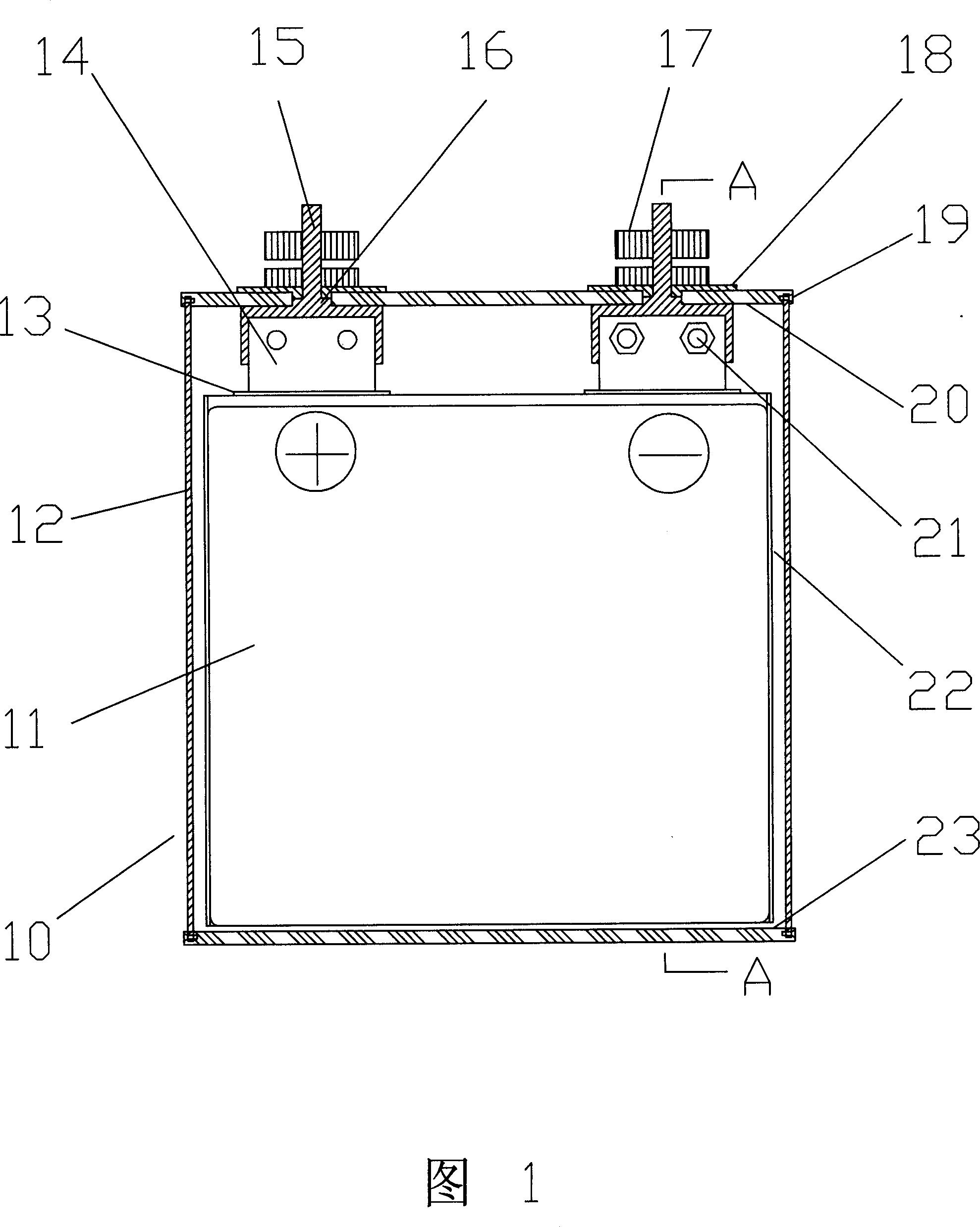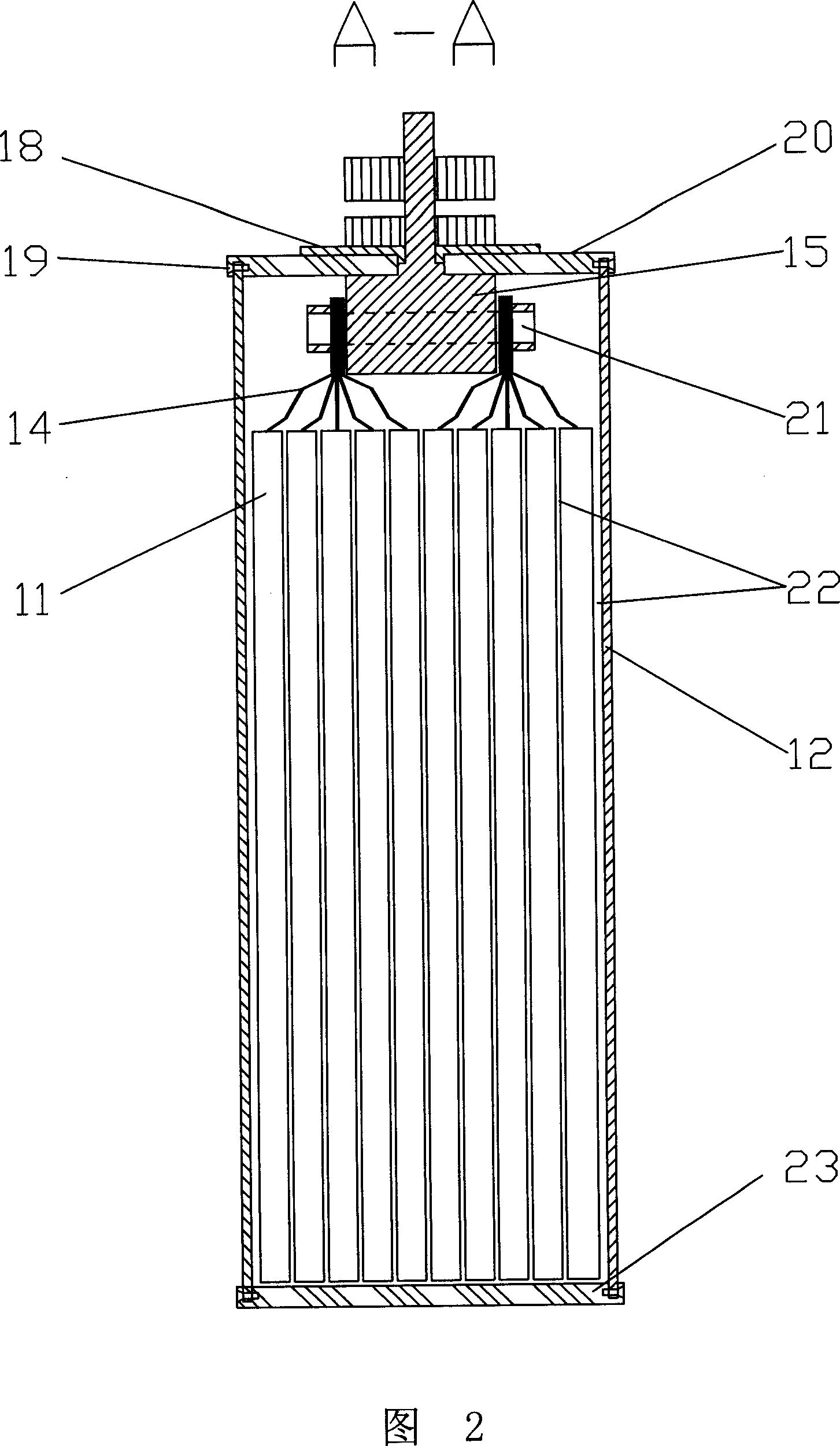Dynamic type polymer lithium ion power supply and its manufacturing process
A lithium-ion battery and polymer technology, applied in the direction of electrochemical generators, circuits, electrical components, etc., can solve the problems of limiting the application and development of lithium-ion power batteries, hindering them, and preventing cracking, enhancing reliability, and avoiding damage Effect
- Summary
- Abstract
- Description
- Claims
- Application Information
AI Technical Summary
Problems solved by technology
Method used
Image
Examples
example 1
[0047] (1) Preparation of negative electrode:
[0048] (1.1) Dissolve 1560 grams of polyvinylidene fluoride in N-methyl-2-pyrrolidinedione, first add 20 grams of oxalic acid, then add 500 grams of acetylene black, and finally add 22000 grams of graphite powder. After high-speed stirring, vacuum or static degassing, the slurry-like negative electrode slurry is made.
[0049] (1.2) Coating film: According to the requirements of battery product design, the negative electrode slurry is evenly coated on the front and back surfaces of the 16 micron thick copper foil. The solvent N-methyl-2-pyrrolidinedione was dried and removed at 120° C., and the thickness of the electrode strip was controlled at 160±10 microns.
[0050] (1.3) Rolling: Roll the negative pole piece to a specified thickness under a certain pressure, and control the film density and porosity of the pole piece film. The thickness of the electrode strip after rolling is controlled at 110±5 microns.
[0051] (1.4) She...
example 2
[0066] (1) Preparation of negative electrode:
[0067] (1.1) Dissolve 1,560 grams of polyvinylidene fluoride in N-methyl-2-pyrrolidinedione, first add 20 grams of oxalic acid, then add 500 grams of acetylene black, and finally add 35,000 grams of amorphous tin Lithium composite oxide SnLi ρ P B χ o ψ . After high-speed stirring, vacuum or static degassing, the slurry-like negative electrode slurry is made.
[0068] (1.2) Coating film: According to the requirements of battery product design, the negative electrode slurry is evenly coated on the front and back surfaces of the 16 micron thick copper foil. The solvent N-methyl-2-pyrrolidinedione was dried and removed at 120° C., and the thickness of the electrode strip was controlled at 150±10 microns.
[0069] (1.3) Rolling: Roll the negative pole piece to a specified thickness under a certain pressure, and control the film density and porosity of the pole piece film. The thickness of the electrode strip after rolling is...
PUM
| Property | Measurement | Unit |
|---|---|---|
| specific surface area | aaaaa | aaaaa |
| thermal conductivity | aaaaa | aaaaa |
| thickness | aaaaa | aaaaa |
Abstract
Description
Claims
Application Information
 Login to View More
Login to View More - R&D
- Intellectual Property
- Life Sciences
- Materials
- Tech Scout
- Unparalleled Data Quality
- Higher Quality Content
- 60% Fewer Hallucinations
Browse by: Latest US Patents, China's latest patents, Technical Efficacy Thesaurus, Application Domain, Technology Topic, Popular Technical Reports.
© 2025 PatSnap. All rights reserved.Legal|Privacy policy|Modern Slavery Act Transparency Statement|Sitemap|About US| Contact US: help@patsnap.com


